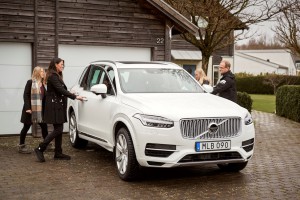Volvo’s tapping the brakes on its Drive Me test program in Sweden as it believes the technology is not quite ready for humans.
It was expected to yield big results when its introduced in 2014. Designed to get real people, in Sweden, behind the wheel of autonomous vehicles for additional testing, the program is being slowed down after engineers decided the program wasn’t ready for prime time.
Initially, Volvo said that 100 self-driving cars would be made available for members of the public to drive on the streets of Gothenburg, Sweden, the automaker’s hometown, by the end of this year.
However, the plan has been modified to include just 100 people, not cars, who will be rolled into vehicles during the next four years, which means the program designed to get real-world feedback on autonomous vehicles will take more time.
(Volvo sets up subscription service for Polestar. Click Herefor the details.)
Additionally, the cars in the program aren’t fully autonomous, but are instead equipped with driver-assist systems that require an attentive human driver, along with sensors that monitor the driver’s behavior.
Thus far, just two families have received cars. The automaker plans to deliver three more test cars early next year. What’s behind Volvo’s slower approach? Concerns about the safety of the products as well as the impact of better technology.
“On the journey, some of the questions that we thought were really difficult to answer have been answered much faster than we expected,” Marcus Rothoff, the company’s autonomous driving program director, told Automotive News Europe. And in some areas, we are finding that there were more issues to dig into and solve than we expected.”
(Click Here for details about Volvo’s plans to go all-electric.)
The sensors used for autonomous vehicles have improved so dramatically and so quickly, they’ve outpaced the rest of the tech needed for a driverless vehicle. Officials are apparently concerned that if they continue development, they make pick a sensor that will be outdated quickly or, even worse, not compatible with other technology used for a system.
Additionally, the electrical architecture in the vehicles has been more challenging than expected, leading to a variety of issues and time delays.
With plenty of studies showing that drivers have, at the very least, some concerns about riding in a self-driving automaker, the automaker would like to see some comfort and confidence in these systems by drivers.
(To see more about the Volvo XC60 taking Japan’s Car of the Year award, Click Here.)
This is important because as Volvo CEO Håkan Samuelsson mentioned earlier, adding all of this technology into a vehicle could add nearly $10,000 to its price.


